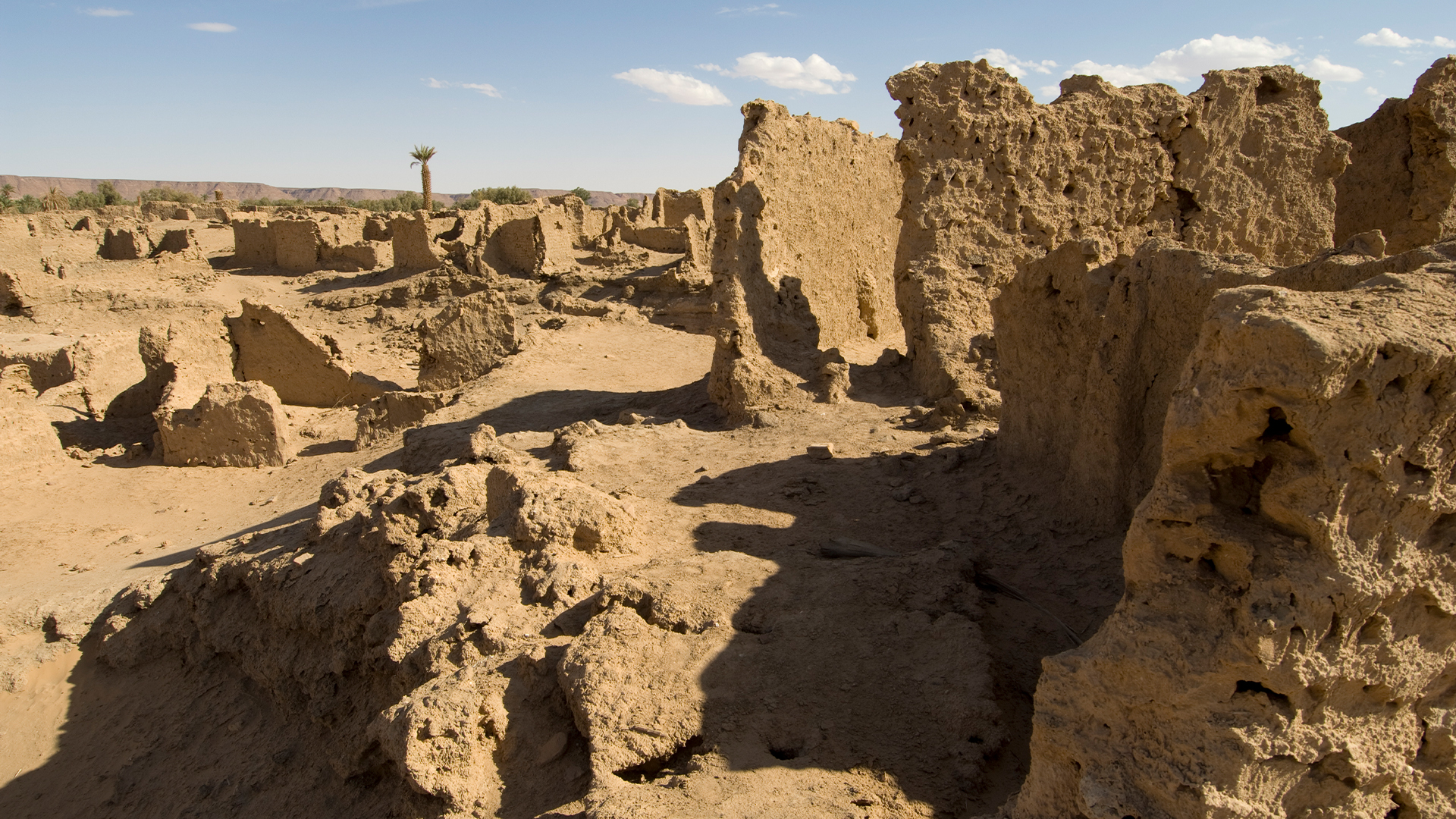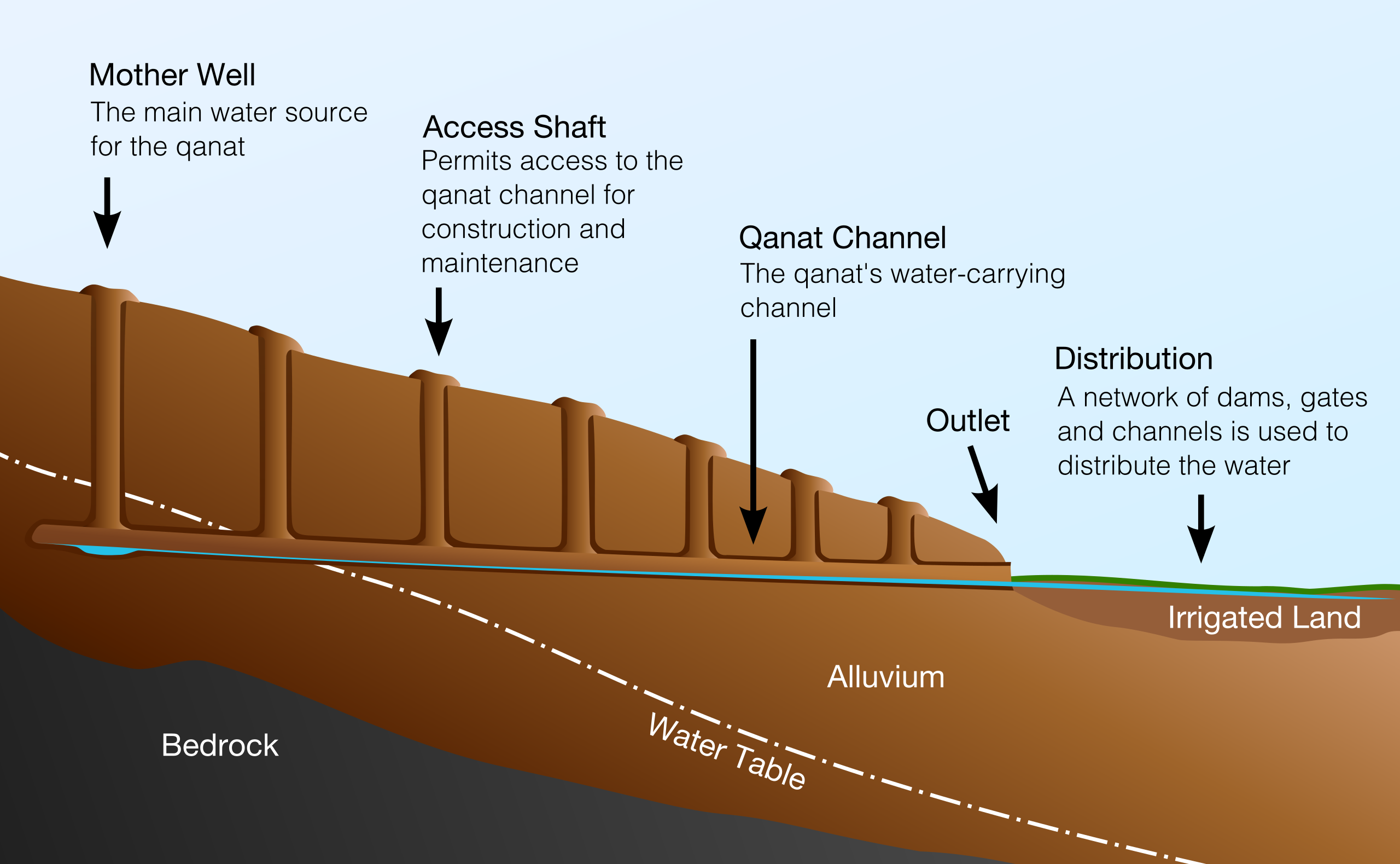'World-class aquifer' enabled ancient African kingdom to thrive in the Sahara for hundreds of years
The rise and fall of the Garamantes in what is now Libya is a cautionary tale for regions that rely on ancient groundwater.

A unique method of obtaining underground water enabled the Garamantes to thrive in the Sahara more than 2,000 years ago, long after the region became a desert. But their demise is a cautionary tale for modern regions, like California, that rely heavily on ancient groundwater for their modern supply.
"They were lucky to have this world-class aquifer," Frank Schwartz, a hydrogeologist at The Ohio State University, told Live Science. "But it was a non-sustainable system, and it eventually ran out."
Schwartz, who studies the hydrogeology of ancient civilizations, described the rise and fall of the Garamantes on Oct. 16 at the Geological Society of America's annual conference in Pittsburgh.
Historians once thought the Garamantian kingdom was a minor power in the Fezzan region of North Africa — now in southwestern Libya — until it was subdued by the expanding Roman Empire in the first century.
Related: Plantation slavery was invented on this tiny African island, according to archaeologists
But since the 1960s, archaeology has revealed that the kingdom was larger and more powerful than previously thought, with several cities fed by water transported by gravity in underground tunnels, or foggaras, from an ancient aquifer in the sandstone rocks of the nearby highlands — a major feat of ancient engineering.
"This was the first society that grew up in Africa without a river," Schwartz said. "In Egypt, they had the Nile flooding every year. But here there was no river, nothing."
Sign up for the Live Science daily newsletter now
Get the world’s most fascinating discoveries delivered straight to your inbox.
Saharan kingdom

Schwartz said the Garamantes descended from Neolithic cattle herders who lived in the region between 7,000 and 5,000 years ago, during the last "Green Sahara" phase — a relatively wet phase of the Saharan climate that occurs roughly every 23,000 years and is caused by changes in Earth's rotational axis.
But the climate changed and the Sahara became"hyper-arid" by the time the Garamantian kingdom arose in about 400 B.C., he said.
Archaeologists think the Garamantes extracted groundwater with different technologies at different times, including "shadoof" wells, in which water is lifted in a bucket using a counterbalanced lever, and "dalw" wells, in which water is lifted in a leather bag by harnessed animals.
But the greatest innovation was the foggaras, which carried water to the Garamantian cities.
Schwartz said the technology had originated in Persia, where the tunnels were known as qanats, and was probably transmitted to the Garamantes by traders on desert caravans. But most Persian qanats drained aquifers that were replenished each year from melting snow — something not seen in the Fezzan.
Instead, the Garamantian foggaras tapped an ancient subterranean aquifer that had formed in the nearby sandstone highlands tens of millions of years earlier and had been "topped up" during the Green Sahara phases.
Schwartz notes it was only a matter of good luck — "serendipity" — that the Garamantes lived near the aquifer and that the foggaras functioned at all. "This shouldn't have worked here," he said. But luckily, it did, and the water from the foggaras enabled the Garamantes to establish a powerful kingdom in the middle of a desert.
Digging for water
Archaeologists have now identified more than 460 miles (750 kilometers) of foggaras in the Fezzan region, and they were probably dug by people enslaved by the Garamantians, Schwartz said. Some of the longest foggaras are more than 4 miles (6.5 kilometers) long and cut through sand, gravel and solid sandstone; vertical access shafts descend to the underground tunnels roughly every 16 to 33 feet (5 to 10 meters).
Andrew Wilson, a professor of archaeology of the Roman Empire at the University of Oxford who wasn't involved in the presentation, said one of the oldest foggaras has been dated from organic matter in its mud-brick shaft lining to between 391 B.C. and 206 B.C. but many were younger.
Related: 'Christ' tattoo discovered on 1,300-year-old body in Sudan
Wilson told Live Science in an email that it wasn't clear how much water the foggaras extracted from the ancient aquifer and to what extent the aquifer was replenished by the region's occasional rains.
But there were "signs of stress" that reflected a falling water table, such as a deepening and extending of the foggaras, he said. But such measures could not compensate for the aquifer's overuse: "Ultimately the foggaras failed after several centuries."
The water level of the aquifer eventually fell below the levels that it could feed into the foggaras, leading to a decline in the Garamantian kingdom after about A.D. 100, Schwartz said. But the region's underground water is still being exploited by Libya's Great Man-Made River Project, which began in the 1980s and now supplies water to farmland and millions of people in the north of the country, he said.
The demise of the Garamantes illustrates the dangers of exploiting ancient supplies of groundwater, as is now being done in California and much of Iran, Schwartz noted.
"The Garamantes had serendipity for a while, but it was not sustainable," he said.
Tom Metcalfe is a freelance journalist and regular Live Science contributor who is based in London in the United Kingdom. Tom writes mainly about science, space, archaeology, the Earth and the oceans. He has also written for the BBC, NBC News, National Geographic, Scientific American, Air & Space, and many others.









